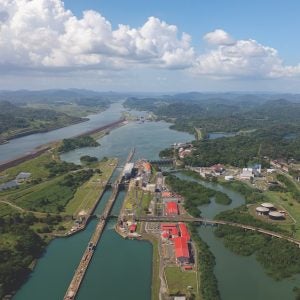Part of the Scottish and Southern Energy Group, one of the UK’s leading utility companies with over five million customers, Scottish Hydro-Electric is one of the largest generators of renewable energy in the UK, operating almost 70 hydroelectric power stations.
Located on the south east shore of Loch Ness is the company’s 300MW Foyers pumped storage power station, which recently had to undergo repair work when a problem was found with one of its lower-works water tunnels.
Although the current power station was built in 1975, Foyers was the site of the UK’s first large scale hydroelectric scheme in 1896, the power being used to provide energy for aluminium smelting.
The upper reservoir at the scheme was formed by joining two smaller lochs to form Loch Mhor, and a tunnel bored through the mountainside to channel water down to Loch Ness.
When the pumped storage redevelopment began in 1969, the original pipelines and tunnel were adapted to supply a new 5MW turbine generator and the water catchment area enlarged to over 200km2, by diverting two rivers into Loch Mhor.
Nowadays, water runs from the upper intake along a concrete-lined, D-shaped low pressure tunnel, 7m in diameter and 3km long, until it reaches an 18.6m diameter surge chamber, which acts to absorb sudden changes in water pressure and flow rate. High pressure is created when the water fills a 112m high, 7m diameter concrete-lined vertical shaft, which connects via a right-angle bend at the base to a steel lined concrete tunnel of the same diameter.
The water then divides into two smaller steel-lined tunnels, which taper down to 3m wide when they reach the turbine inlet valves, the narrowing effect producing a further increase in pressure. In the final section, the water is steeply inclined through a steel U-bend section, flowing through each turbine at a rate of 200m3 per second when generating electricity and over 160m3 when in pumping mode.
Each 5m wide turbine drives a 200,000hp generator, located 15m below loch level. It was actually at 50m beneath Loch Ness that a problem occurred in one of the water tunnels; the steel lining became detached from the concrete, resulting in a sudden pressure drop and causing it to be shut down.
Scottish Hydro-Electric contacted Sheffield based design and project engineers, Kvaerner Markham to help carry out the repairs, having previously worked with the company on a similar contract at the Luichart scheme in the north of Scotland.
Although not responsible for the installation, its forerunner, Markham of Chesterfield, UK, had also manufactured the original turbines, inlet valves and steel draft tubes that interfaced with the concrete tunnels, giving Kvaerner Markham the essential know-how for redesigning the replacement fittings, says the company.
A 13-strong team of qualified engineers was assembled to work on the tunnels. Given the health and safety implications of working below ground in a confined, potentially hazardous environment, Kvaerner’s in-house safety officers were also on hand to deliver training on cutting/welding techniques and the use of breathing apparatus.
Working round the clock and wearing personal BA equipment to protect against build-up of fumes, the Kvaerner team removed the damaged steelwork, cutting off hundreds of anchor bolts that secured the lining to the concrete walls. Once this was completed, the concrete interface was repaired, ready for new steel liners. These were redesigned prior to fabrication on Kvaerner Markham’s CAD/CAM system, with energy consultants Mott Macdonald having first reviewed both the mechanical and civil engineering integrity of the layout.
The same Kvaerner site team are now reinstating the steel liner plates, weighing 30t in total, which will be brought underground and pulled along 60m of tunnel, as the only means of ready access. These will then be manhandled into position, for welding and securing with 400 anchor bolts. The team will then reinstate the draft tube and recommission the tunnel.






